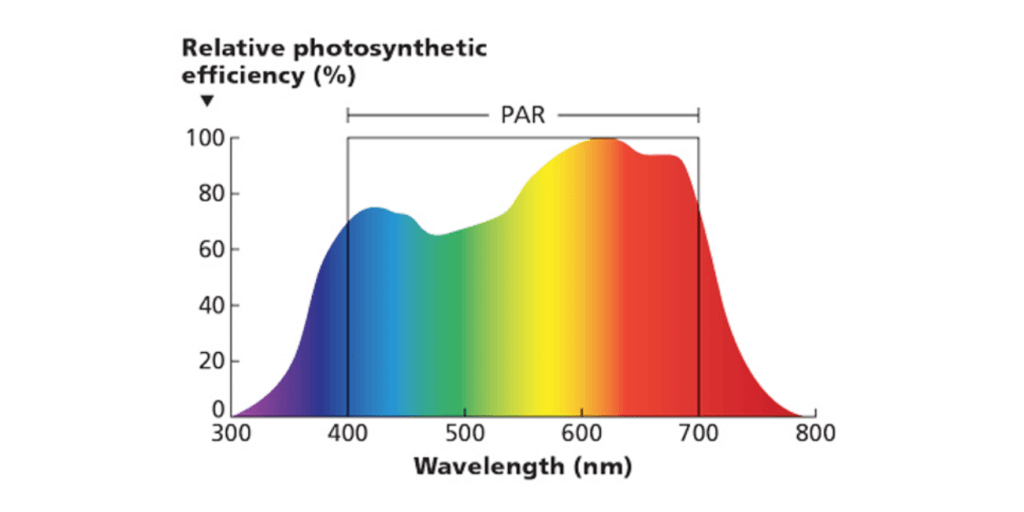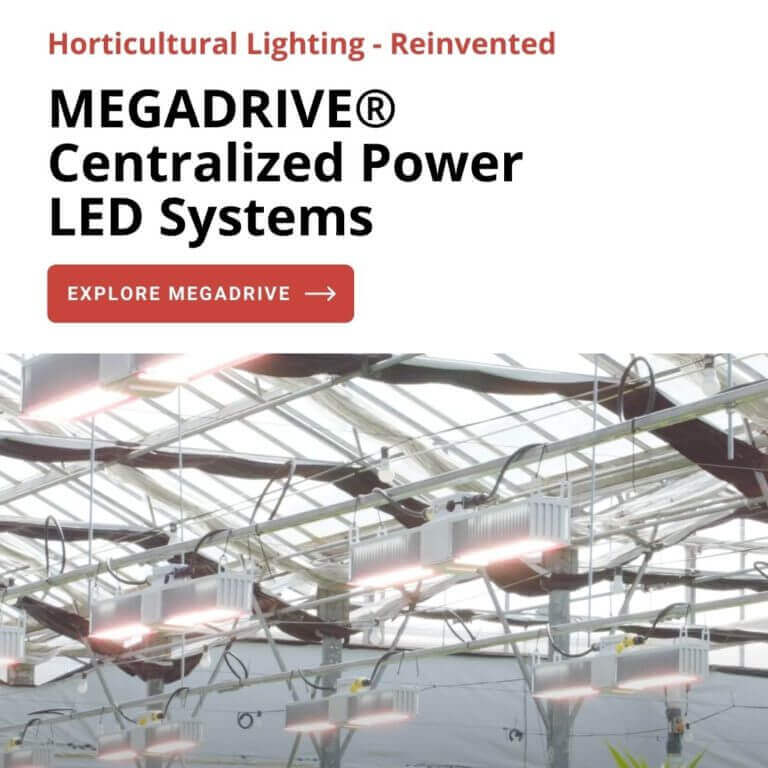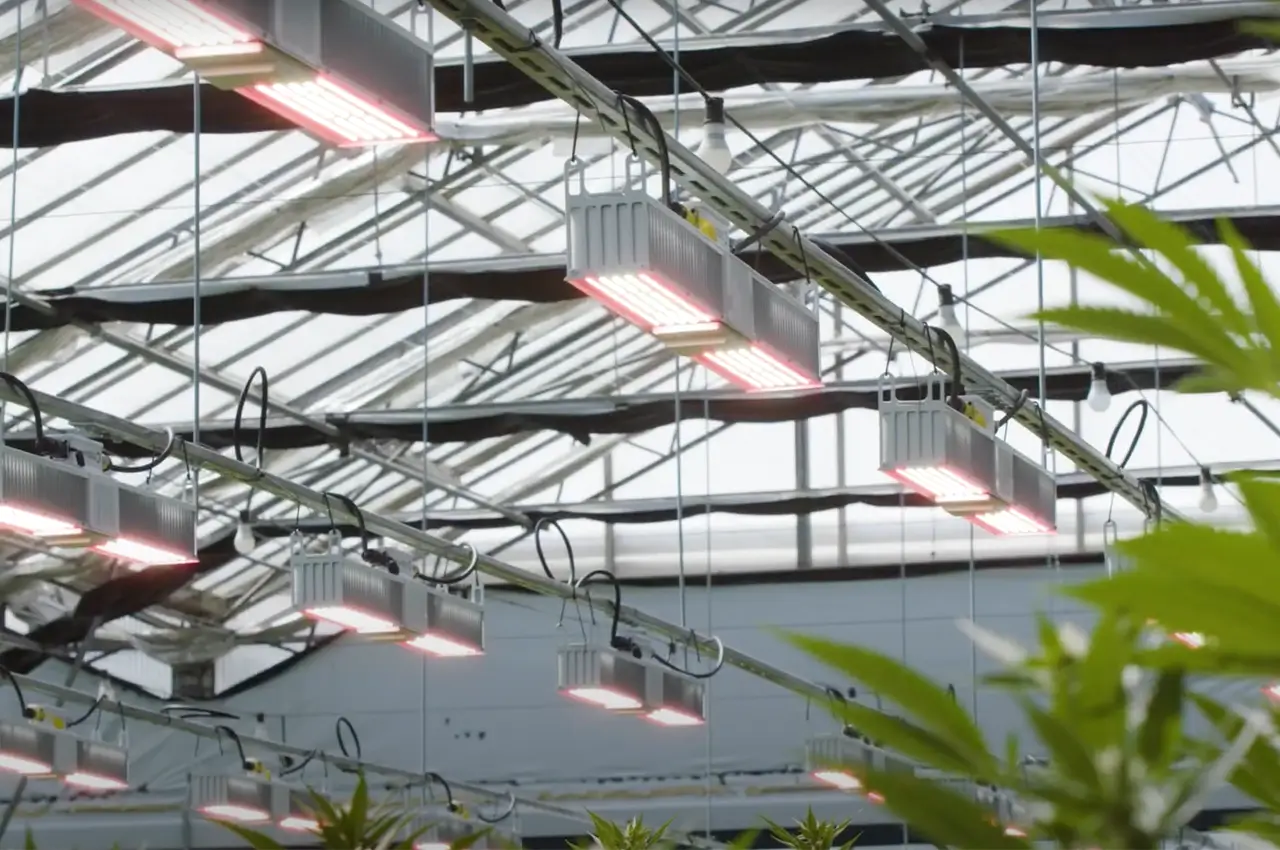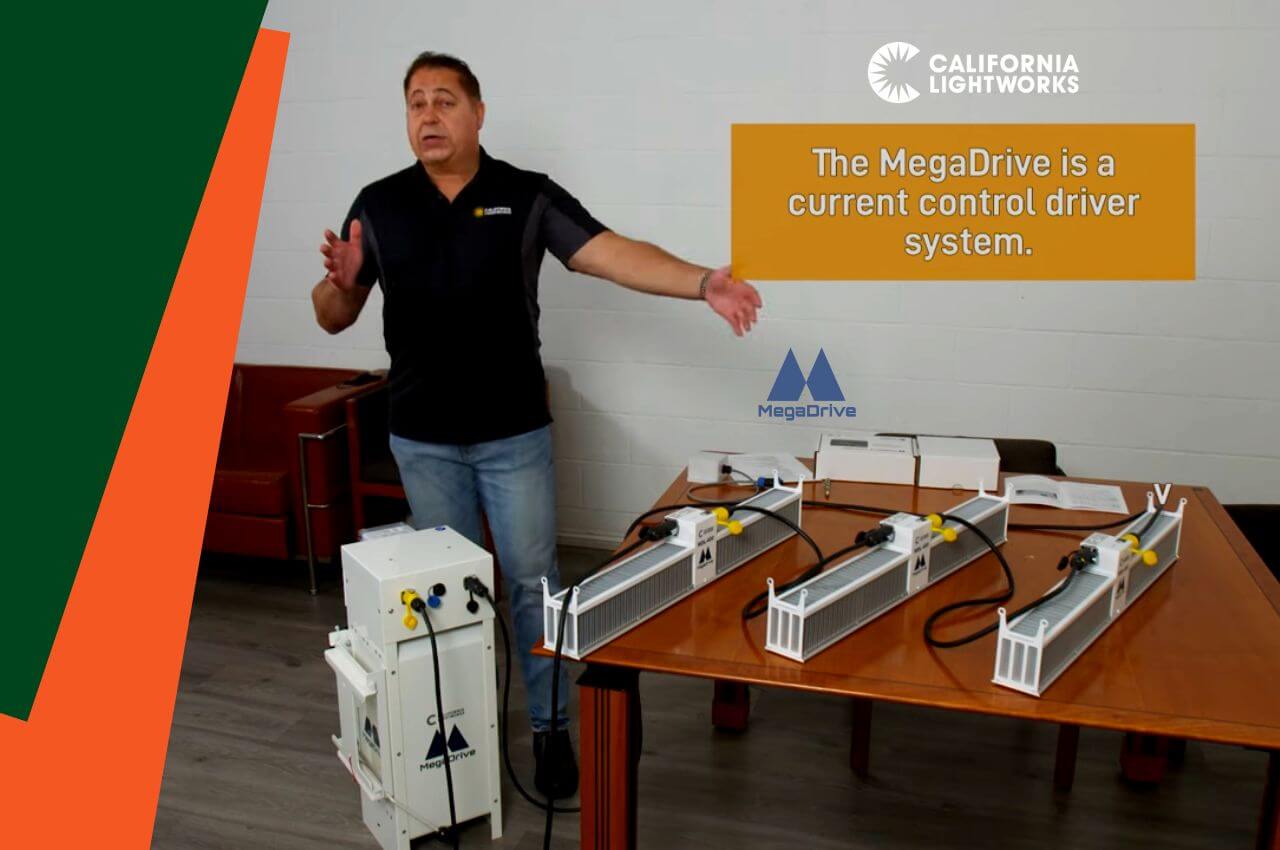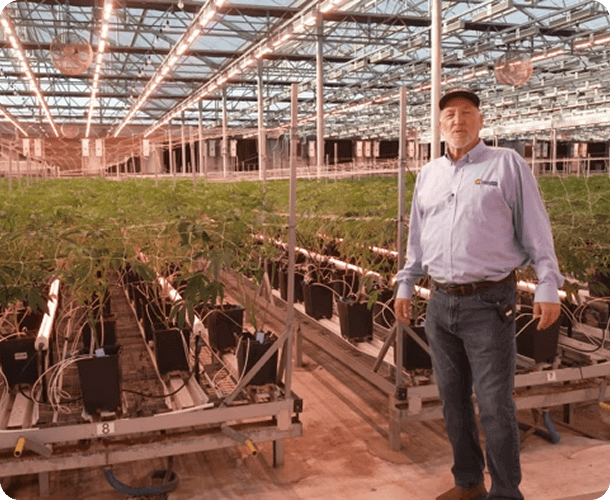Selecting a LED grow light can feel like a high-pressure task. You know that a high-quality LED grow light is one of the smartest investments you can make for your indoor or greenhouse operation. You also know that an inferior LED light is a waste of money and prevents you from getting the kind of growth you’re capable of. But how do you confirm that an LED grow light is equipped to provide your plants with the amount and quality of light they require to thrive? How do you interpret the metrics provided by the manufacturer? It’s may seem a bit technical, but it is simpler than it seems. When you’re shopping for a new lighting system, you want to look out for the following important PAR, PPF and PPFD Metrics.
You should also understand the following concepts:
- MICROMOLES
- MICROMOLES PER JOULE
- UNIFORMITY or EFFICACY
- FIXTURE COST PER MICROMOLE
These measurements tell you how much usable light the fixture produces and how much of that light reaches your crop. These will also tell you the electrical efficiency of the fixture as well as the real cost for light you are actually getting. We’ll take a closer look at these metrics in a moment. But first, let’s get a little background on why we evaluate grow lights the way we do.
Why Grow Lights Use Different Metrics than Normal Lights – Lumens vs PAR
In traditional lighting applications, lamps are evaluated according to their lumen output. When it comes to grow lights, however, lumens don’t really tell you what you need to know.
You see, a lumen is a unit of measurement that expresses how bright a certain light appears to the human eye and favors light in the yellow/green/orange spectrum. What the human eye perceives is largely irrelevant when you’re talking about providing the right kind of light for your plants. Therefore, we never talk about lumens in connection with grow lights.
In the grow light industry, we focus on PAR, or Photosynthetically Active Radiation. PAR is the range of light that plants use for photosynthesis. While the human eye is most sensitive to the green, yellow, and orange light spectrum, plants make more use of blue and red spectrum for their development. In other words, a high lumen output means very little to your plants. They don’t just need a lot of lumens; they need a lot of light within the PAR range.
Understanding PAR
So, what is the PAR range?
Photosynthetically active radiation covers the visible range of light from 400-700nm. In terms of color spectrum, this encompasses all wavelengths from blue to red. A PAR meter is often used to measure how much PAR light a lamp emits. This measurement is expressed by identifying the number of photons emitted within the PAR range.
How do we measure PAR light?
Measuring light gets a little complicated but understanding this is important to understanding grow light output and efficiency.
When we measure light, we are talking about the number of photons emitted over a period of time over a specific surface area. When we talk about the amount of light per day from the sun, we talk about moles. When we talk about the amount of light coming from a light fixture we talk about micromoles (one-millionth of a mole).
A Mole is an energy measurement used in physics and chemistry. For light, a mole is defined as approximately 6.022140857 x 1023 photons. That’s a lot of photons! A micromole is one-millionth of a mole. Therefore, a micromole (umol) can also be defined as 1 μmol = 6.022140857 x 1017
Don’t worry about the math – we are just counting photons of light over a period of time.
Understanding PPF
The best measurement of how much total PAR light a fixture can produce is called PPF. PPF refers to photosynthetic photon flux, and to put it simply, this is a measurement of how many total photons of PAR light a light fixture emits per second.
Why are we measuring PAR-per-second?
Well, while most lights appear to radiate the same amount of light consistently to the human eye, there is often some fluctuation in light quality from moment-to-moment. Now, that fluctuation will be next-to-nothing in quality LED grow light, as the advanced technology enables a more consistent output. But accuracy is essential in any lighting system, so it’s standard practice to measure PPF. That way, you know that the metrics provided by the manufacturer represent PAR output on average, instead of in each moment. Once again, put simply, PPF is based on the total number of PAR photons a fixture emits per second.
How Do We measure PPF?
PPF is measured using a sphere test. The light fixture is placed in a round sphere and the total number of photons of PAR light emitted by the fixture in all directions is measured. The sphere test tracks the number of PAR photons each second, and the results are expressed as micromoles per second or abbreviated as uMol/s.
The best way to compare LED grow light fixtures is to look at their PPF light output – not lumens or watts. This is the real horsepower of a grow light – regardless if it is LED, HPS or other light sources.
Remember, this is the total number of PAR photons a light fixture can emit in all directions – not the number of photons that will reach your plants. For this you need to know PPFD.
Understanding PPFD
Now you know what your LED grow light can accomplish in terms of PAR output. An entirely separate question is: How much light is reaching my plants?
You see, if you measure PAR one inch from the light source and then one foot from the light source, you’re going to get two very different numbers. As you move the light source farther away from the plant surface the light intensity will decrease as the area illuminated by the light increases with the square of the distance. So, the intensity decreases at the same rate. This is known as the inverse square law – if you move the light source away from a surface by a factor of two – the light decreases by a factor of four. As a result, it’s not enough to know how much PAR light a grow light can produce. You need to know how much PAR light will reach the canopy of your crop. This will vary with each fixture, how far it is from the canopy, and how many fixtures are overlapping and lighting the plant in question. and whether you are using reflective walls.
That’s where PPFD comes in.
PPFD, or photosynthetic photon flux density, refers to the number of PAR photons that land on a given surface each second. When you know the PPFD, you know the amount of PAR light that reaches your crops at each point measured. This number is measured in micromoles per square meter per second – expressed as umol/m²/s. Once again, don’t worry about the math or the symbols – we are just talking about how many PAR photons hit a specific area of a surface – which is what we really care about in growing plants.
Speaking in general terms, each species of plant has specific PPFD requirements to get the best yield. For example, flowering plants such as cannabis need about 300 – 600 umols during the vegetative phase and 800 – 1000 umols during flowering. These are PPFD measurements.
Obviously, PPFD measurements in a tent with the light two feet above the canopy are going to be drastically different than in a warehouse with 20-foot ceilings. You must match the PPFD and footprint of your grow light to your specific canopy. Most LED fixtures are designed for a specific hanging height and footprint. It is important to buy the right light for your space. Too much light can be just as bad as not enough light.
How Do We Measure PPFD?
PPFD is generally measured with a PAR meter which you can place at any location or height to see the actual light at that spot. However, a PAR meter will mostly measure the light coming directly from the light source. It does not do a good job measuring the light coming from the sides. In many cases, it is better to have a mix of direct and indirect light hitting your plants at different angles. This will allow deeper penetration into the canopy and better all-around yield. In a small grow, you will be better off in a tent with light bouncing off the sides as well as directly hitting the plant. In a larger operation with many lights, it is usually better to hang the light higher so that multiple lights will hit each plant at various angles. A standard PAR meter will not measure this very well.
At the end of the day, your plants will know best regarding the amount of light they will best respond to. There is no replacement for the actual growing experience!
Uniformity
Another key matrix in selecting a grow light is uniformity. This means how evenly the light is spread over your canopy. A grow light might have a great PPFD at two feet high at the center of the light but what if the light at the sides is much lower? You will get great yield in the center and it will drop off dramatically at the sides. You want to find a light with a uniform spread over the canopy in your grow operation. Many LED manufacturers offer a PPFD map which shows the PAR light levels at various surface areas and various hanging heights. This can be very beneficial to getting the best coverage for your specific situation.
Understanding Efficiency or Efficacy
A key metric to discuss is efficiency. It is great to have a lot of light output but if this requires huge amounts of electricity and heat, you may end up losing more than you gain.
Efficiency in lighting, or more specifically, “efficacy”, is a measurement of how much light is generated with a given amount of energy. In traditional lighting, this is expressed as Lumens per Watt. As we have explained above, for grow lights, we don’t really care about lumens or even watts. We care about micromoles per joule.
We have already explained what a micromole is above. A Joule is a measurement of input energy. The dictionary defines a Joule as:
Joule – A unit of energy = a Watt * Second or a watt of power for a second. It’s roughly the same as a Kilowatt * Hour (KWH) only much smaller.
How Do We Measure Efficacy?
So, if we know the PPF output of a fixture and the input energy you can figure out the efficacy rating. This is expressed as micromoles per joule or uMol/j. Most commercial LED suppliers will list the efficacy rating in their product specifications. The higher the efficiency rating, the more light you will get for the energy input.
If you only know the PPF and the wattage of a fixture, you can just divide to get the efficacy. For example, a 400watt fixture that has a PPF rating of 800 has an efficacy rating of 2.0. Or a 400w fixture at 2.0 uMol/J produces 800 uMol of PPF
In the old days, HPS had the highest efficacy rating which was up to 1.9 umol/j. This is why it consistently got good yield. However, LEDs are currently reaching 3.0 umol/j and have left HPS in the dust. The efficiency of LEDs will continue to increase while HPS efficiency is fixed.
Cost Per Micromole
Now we are ready to talk about cost – not the total cost of the fixture or the cost per watt – the cost per micromole – $/umol. This is the best measure of the real purchase cost of one fixture compared to another. If a fixture puts out 800 micromoles PPF and costs $ 800 – that is $ 1.00 per micromole – a fixture that puts out 1500 micromoles PPF but costs $ 3000 is $ 2.00 per micromole. This is a good measure of the fixture cost for LEDs but does not tell you how much the fixture will cost to operate. You still need to look at the efficiency of electrical usage over time.
This probably sounds like a lot but if you can understand the basics of PAR, PPF, PPFD and efficacy you have gone far in understanding grow light metrics.
Beyond the Metrics
When searching for the right LED grow light, your understanding of these metrics will be a great help in choosing the best light for your crop. In fact, the things you’ve learned here will help you separate quality manufacturers from cheap, unreliable manufacturers right at the start. If you’re looking at an LED grow light from a company that can’t come up with these metrics or is speaking to you in lumens alone, run the other way.
And when you look at the PPFD metrics, ask the manufacturer to provide the details of how that measurement was taken. A quality manufacturer will be able to tell you the multilevel and horizontal distance from the light source, the number of measurements used to calculate the average, and the min/max ratio. This kind of transparency ensures you can trust the company you’re buying from. Not to mention, these stats better inform your understanding of how a lamp will perform in your grow room. But PPFD numbers can be misleading when comparing lights. But by far the best metric is the PPF rating. That is the total photon output and the previously $/PPF calculation is far and away from the best way to compare fixtures apples to apples. Then you have to consider the efficacy or uMols/J which will tell you how much electricity they each will consume for the same uMol of photons.
Lastly, you want to be sure to consider the spectral quality of your LED grow light. As we mentioned above, plants use blue and red far more than any other color on the light spectrum. If your grow light has an abundance of green, that spectrum range is inefficiently utilized and that energy would be more productive if used to create Photons in the red or Blue regions which are much more photosynthetically efficient. Light spectrum and plant response is an entirely different subject. This goes way beyond PAR and is a separate paper on its own. Each species of plant will have different spectrum and light intensity needs. It is important to understand the plant you are growing and what light levels and spectrum have proved to be the best.
If you’re not sure where to start, we recommend checking out the LED lighting line at California LightWorks. We have different LED grow light series tailored for indoor commercial operations, greenhouse grows, and personal cultivation. All lights perform well above average in terms of PAR, PPF and PPFD Metrics., and they are all full spectrum. Some even feature variable spectrum control to ensure your plants get the exact light they need when they need it.
Above all, don’t be afraid to reach out if you need help. Choosing the right lighting system for your crop is hard work, and we’re always here to support driven growers.
